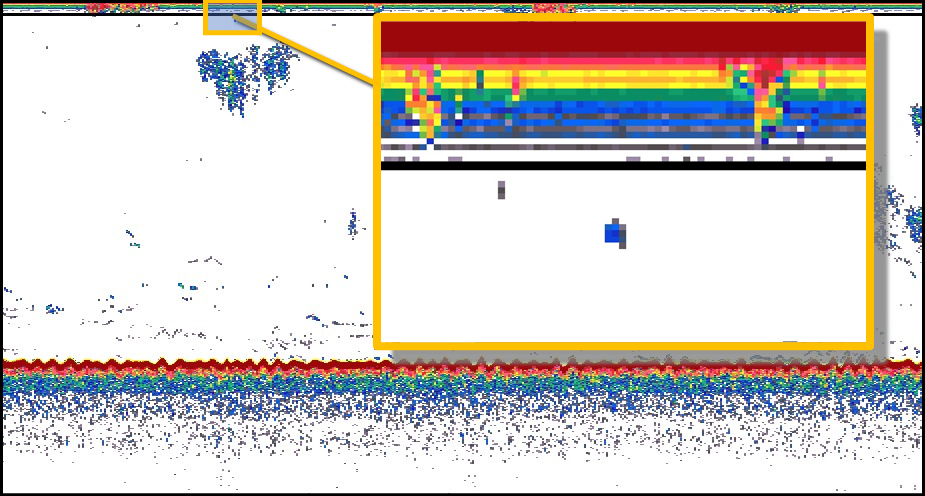Transducer ringing
Echosounders and sonar transducers generate acoustic pulses from the oscillations of piezoelectric elements. After each pulse is generated, these elements take some time to stop vibrating. These vibrations can saturate the receiving elements of a transducer, thereby preventing it from detecting any useful signals from an incoming echo. This undesired effect is known as ringing.
The duration of ringing is determined by the damping characteristics of the transducer. Older devices, and those manufactured using non-ceramic materials, that have poor physical damping, will ring for longer. Transducers that operate at lower frequencies will generally ring for longer compared to higher frequency devices.
Effect of ringing
For downward facing transducers, ringing manifests in echograms as high values within the first few samples of each ping, corresponding to a certain depth. (Hence, ringing is sometimes referred to as "ring down".)
In Figure 1, a line is used to mark the depth to which ringing effects dominate the echogram. Data above this depth is excluded during analysis.
In extreme cases, this effect can extend beyond the theoretical limit of a transducer's near-field (see Simmonds and MacLennan (2005) p39-40).

Figure 1: The inset shows the first few samples of each ping saturated by ringing. In this example, a black line is used to mark the depth to which ringing effects dominate the echogram. Data above this depth is excluded during analysis.